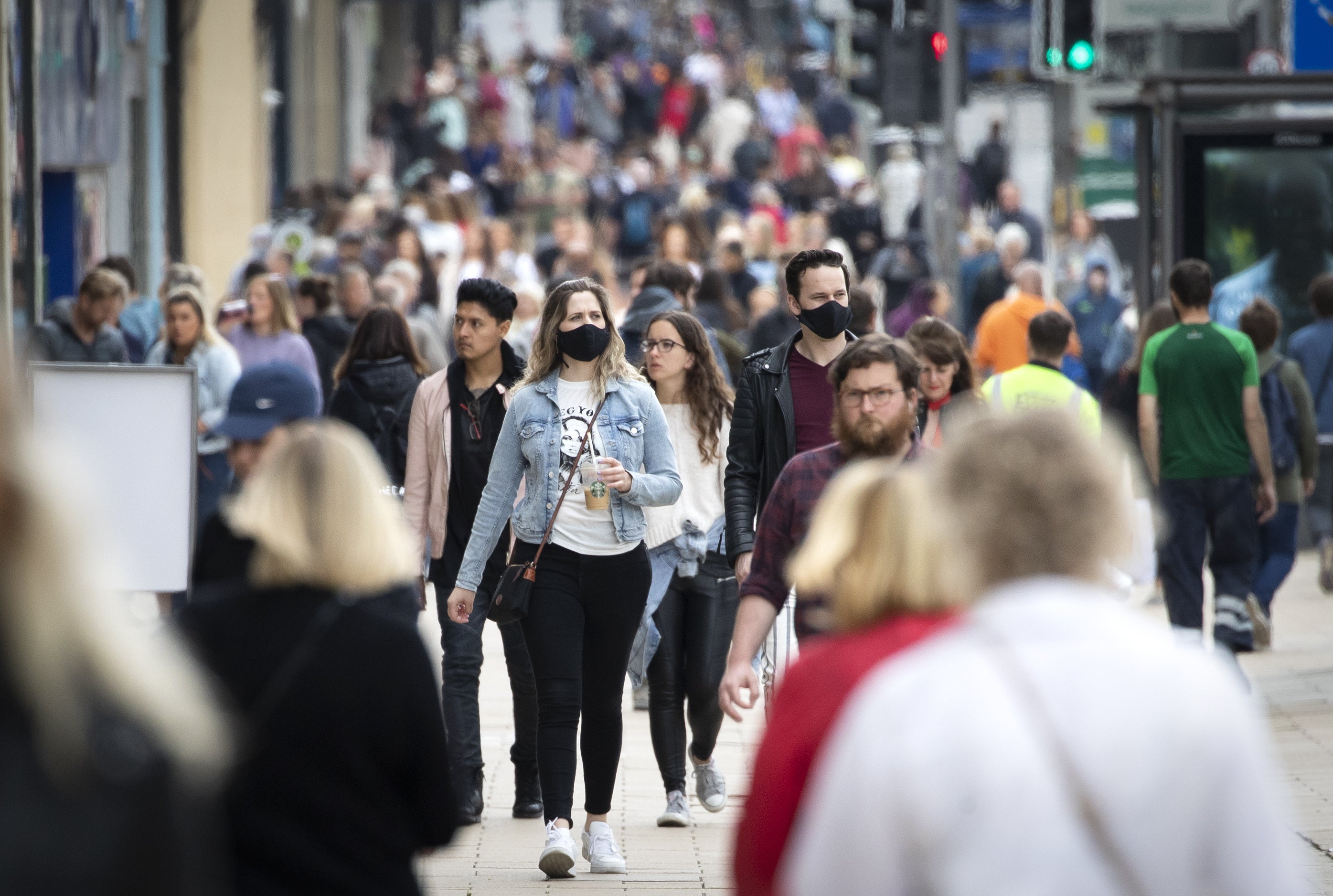Hot summer weather buoys retail sales as inflation pressure continues
The BRC-KPMG retail sales monitor for July showed that total sales increased by 2.3% during the month.

Your support helps us to tell the story
From reproductive rights to climate change to Big Tech, The Independent is on the ground when the story is developing. Whether it's investigating the financials of Elon Musk's pro-Trump PAC or producing our latest documentary, 'The A Word', which shines a light on the American women fighting for reproductive rights, we know how important it is to parse out the facts from the messaging.
At such a critical moment in US history, we need reporters on the ground. Your donation allows us to keep sending journalists to speak to both sides of the story.
The Independent is trusted by Americans across the entire political spectrum. And unlike many other quality news outlets, we choose not to lock Americans out of our reporting and analysis with paywalls. We believe quality journalism should be available to everyone, paid for by those who can afford it.
Your support makes all the difference.Demand for summer clothing and picnic food during the hot weather helped sales at retailers rebound last month, according to new figures.
The BRC-KPMG retail sales monitor for July showed that total sales increased by 2.3% during the month, bringing to an end three consecutive months of decline.
Nevertheless, industry experts said growth was still driven by inflation, with the price of products significantly higher than the same period last year.
Figures from the Office for National Statistics revealed that inflation hit a new 40-year high of 9.4% in June.
Sales improved in July as the heatwave boosted sales of hot weather essentials ... However, with inflation at over 9%, many retailers are still contending with falling sales volumes during what remains an incredibly difficult trading period
The volume of products sold during the month declined as price rises continued to weigh on customers.
Helen Dickinson, chief executive of the British Retail Consortium (BRC), said: “Sales improved in July as the heatwave boosted sales of hot weather essentials.
“Summer clothing, picnic treats, and electric fans all benefited from the record temperatures as consumers made the most of the sunshine.
“However, with inflation at over 9%, many retailers are still contending with falling sales volumes during what remains an incredibly difficult trading period.”
The monitor also showed that retailers saw food sales increase by 2.3% over the three months to July amid rampant inflation.
However, overall sales of non-food items, such as clothing and homeware, declined by 2% in the latest quarter.
Sales of non-food products from stores were up 2% for the three-month period as shoppers continued to switch back to UK high streets, but online sales were down 3.9%.
Paul Martin, UK head of retail at KPMG, said: “The summer could be the lull before the storm with conditions set to get tougher as consumers arrive back from summer breaks to holiday credit card bills, another energy price hike and rising interest rates.
“With stronger cost-of-living headwinds on the horizon, consumers will have to prioritise essentials, and discretionary product spending will come under pressure.”
Separate figures from Barclaycard also show that overall consumer spending lifted in July.
Data from the credit card business showed that spending grew 7.7% in July against the same period last year.
The figures showed that Britons spent more on clothing, beauty and UK holidays as the school holiday period began.
Inflation continues to have a noticeable impact, with price rises forcing shoppers to spend more on essential everyday items ... and to cut back on some discretionary experiences
Credit card spending on essential items increased by 7% year on year, driven by higher prices for food and fuel.
Spending on utilities soared by 43.9% compared with the same month a year earlier.
Rocketing prices of some essential products meant customers began cutting back in other areas, such as overseas travel, and drinking and eating out.
Jose Carvalho, head of consumer products at Barclaycard, said: “July saw Brits get into the swing of summer by prioritising non-essential spending on staycations, new clothes and beauty products, while the heatwave gave an extra boost to the electronics sector, as consumers bought gadgets to keep cool.
“However, inflation continues to have a noticeable impact, with price rises forcing shoppers to spend more on essential everyday items such as fuel, butter and milk, and to cut back on some discretionary expenditure such as meals and drinks out, and holidays abroad.”